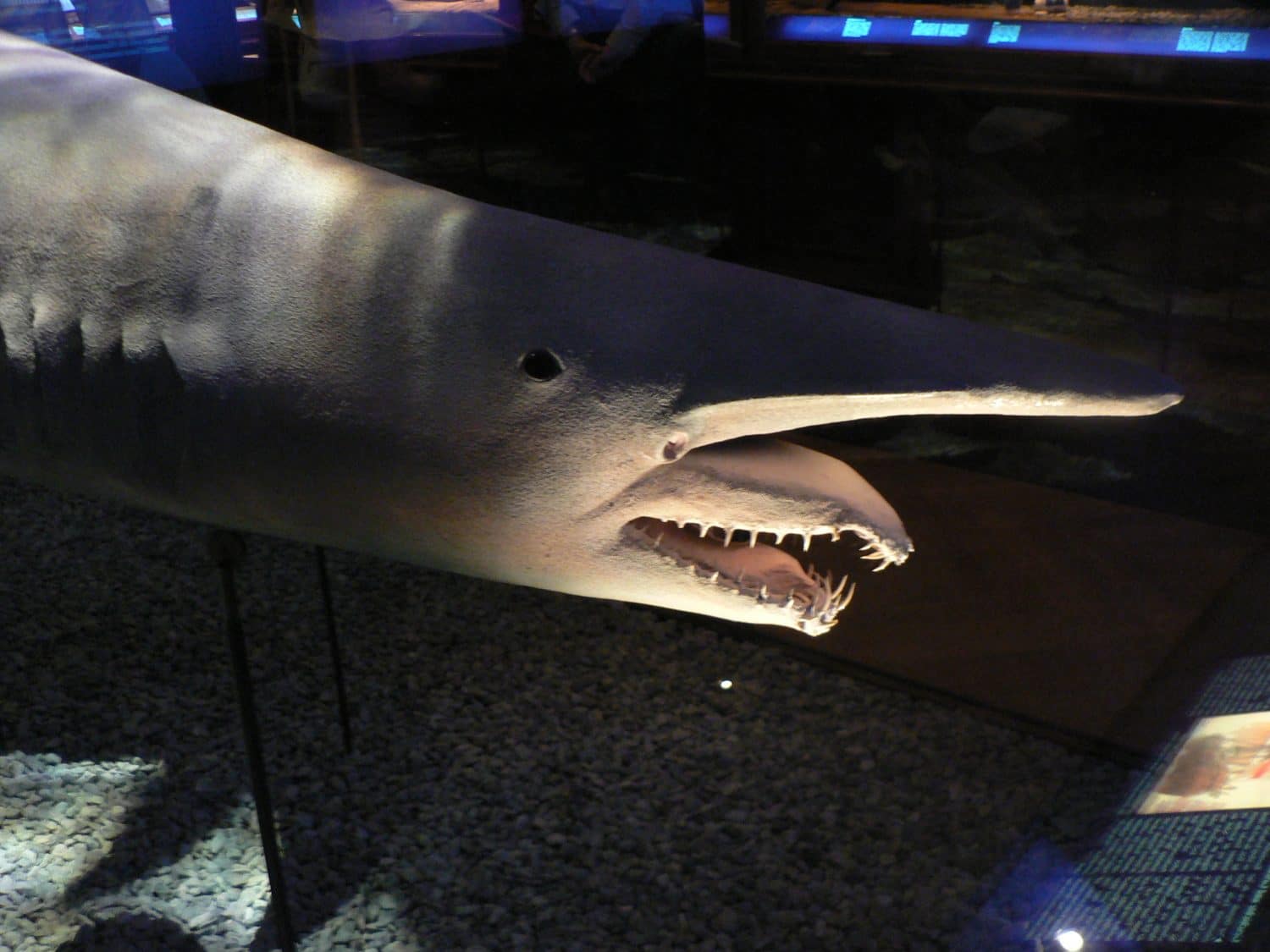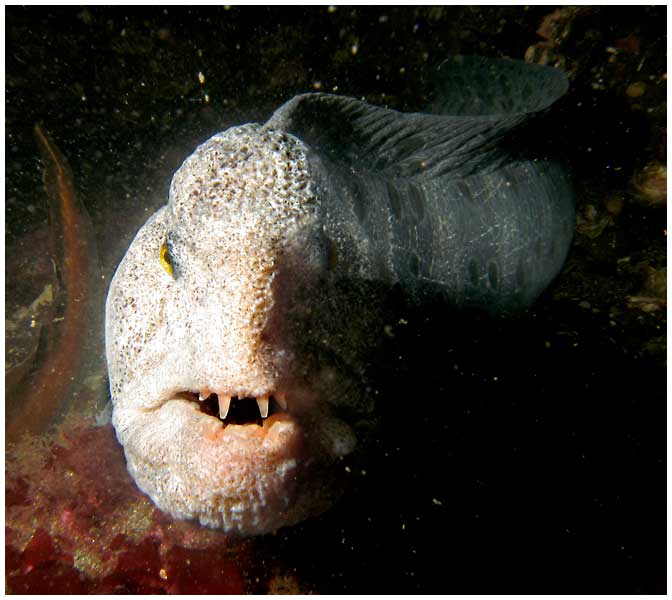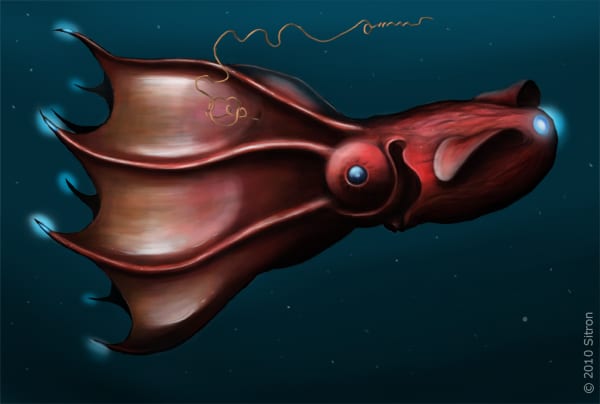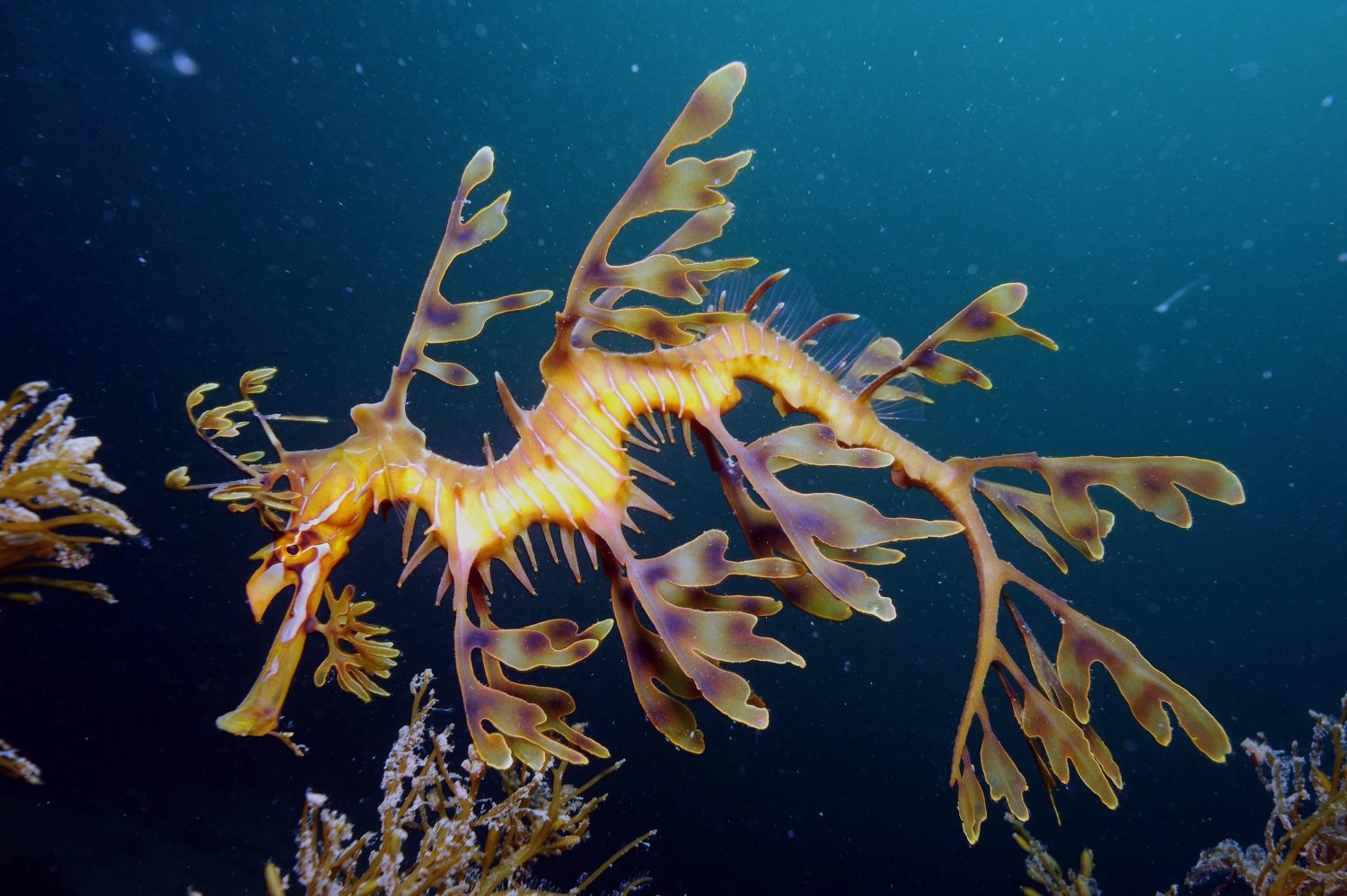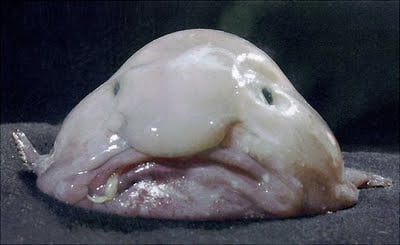Dive Training Blogs
Fantastic (Underwater) Beasts, and where to find them!

By Gemma Smith
It is fair to say that there might not be that many underwater-specific spells, curses, potions or lotions. There may also be a distinct lack of any Nifflers, Nogtails, or Mooncalfs to see when we submerge and go diving. However, while we often look beyond the confines of our own world for enchantment and excitement, it is true without a doubt that the life we can encounter beneath the waves is bursting full of magic. As divers, we have a privileged portal to another world. And for many people, it may be even more captivating than they realise. There are just so many fantastic and mysterious animals living in our watery world. And these are just the ones we know about. There is so much left to explore in our oceans. Who knows what incredible creatures may still be unseen and undiscovered? And even for those more unusual ocean inhabitants, I think it’s important we always remember their unique charms! So, to showcase some of my favourite Blue Planet companions, here are my top five real-life ‘magical creatures.’
Goblin shark
The name alone is enough to intrigue you. Any animal named after the fabled goblin of fairytales and folklore is guaranteed to be amazing. In the Goblin Shark, you will not be disappointed. Even more interesting is how little we actually know about this species of shark. As a deep sea creature, it is the only remaining member of the ancient Mitsukurinidae family. Being referred to as a ‘living fossil’ is a testament to its ancestry. After all, it goes back all the way to the Cretaceous period!! This in part explains its surprising and primitive characteristics. It is best known for its unusual shaped snout, quite different from other shark species. Perhaps even more remarkable than its sword-like snout is it’s expanding jaw. It is able to move independently, and extend out when hunting. This is a peculiar, and perhaps bizarre, adaptation. Found swimming in depths ranging from around 40m/130ft to 1300m/4300ft, it might not be a sight you’d see on your standard dive, but there is no doubt these animals are otherworldly and incredible, with their translucent pinkish hue.
Where to find them: the Goblin shark is actually very widely distributed. Many of these sharks were caught off the coast of Honshu, Japan, at varying depths. More specimens were found in the Sagami and Suruga Bays of the same country. There is evidence of others in New Zealand and Australia. It is currently thought that they largely live near the sea bottom in the Indian, Pacific, and Atlantic Oceans.
Wolf-eel
Going somewhat against its name, the wolf-eel is actually not a true eel. It is one of just five species found in the ‘wolf fish’ family. I have many happy memories of diving with these wolf-eels in the cold ocean surrounding Iceland. Swimming in the freezing water around this country, then coming face to face with this prehistoric looking animal is always exciting. Striking and impressive they undoubtedly are…cuddly looking, though they are not. With a mouthful of sharp-looking teeth, a powerful jaw, and lengths over 2.5m/ 8ft long, they are a sight to behold. Their vicious appearance is actually not the whole story though. Wolf-eels tend to move slowly, and generally are only aggressive to fellow wolf-eels. In fact, there are many stories of wolf-eels becoming quite used to divers, and even eating from the palm of a diver’s hand! They are also secretly quite romantic! Pairs of wolf-eels are often known to mate for life. They are also devoted parents, with both staying in their den to guard their eggs while they wait for them to hatch.
Where to find them: unlike me, these wolf-eels like the cold. You can find them in the cooler waters of the Northern Pacific, ranging across from the Sea of Japan and the Aleutian Islands to California.
Vampire Squid
If we look at the Latin name for the vampire squid (Vampyroteuthis infernalis). We are greeted by one of the catchiest animal classifications possible. Roughly translating to ‘vampire squid from Hell’. There is no question of the initial impact this little cephalopod had on its audience! They are actually not nearly as scary as the name would suggest though. The ‘vampire’ in its title is simply in reference to its reddish-brown skin, the webbing between its arms which resembles a cape, and its red (and sometimes blue) eyes. Far from being the blood-sucking creatures of lore, they are harmless. Growing up to around only 30 cm/1 foot in length, they are the only currently known cephalopod that does not catch and eat live animals for food. While research is always ongoing, it is believed that these squids live primarily on ‘marine snow’. Marine snow is simply the sinking detritus from above them in the water column. While this ‘snow’ might not seem sufficient to live on, these vampire squids are frugal. Because they are living at depths with so little oxygen there are not many other creatures that could survive there. This means there is very little need to expend energy in order to escape from predators.
Where to find them: Vampire squid tend to occupy the temperate and tropical regions of the ocean. They do not like the shallows though and prefer to hang out in the 600m/2000ft to 900m/3000ft range.
Leafy Sea Dragon
I always knew dragons were real and incredible, and with the leafy sea dragon I wasn’t let down! This beautiful underwater creature is a marine fish belonging to the family Syngnathidae. This same family also includes pipefish and seahorses. While the leafy sea dragon resembles a seahorse more than a pipefish, it is thought more likely that it is, in fact, an intermediate step between the two. They get their name from their delicate covering of leaf-life appendages over all of their bodies. This is partly what makes them one of the best-camouflaged creatures you will (or won’t!) be lucky enough to see. They are perfectly adorned to blend in with the surrounding kelp and seaweed of the environment in which they live. While larger than their seahorse relatives, they are still relatively small. You will need keen eyes to pick them out on a dive. It will be worth it if you take the time to do so though.
Where to find them: The leafy sea dragon has only ever been recorded along the southern coastline of Australia. They like to live among seaweed beds, rocky reefs, and on sand patches close by weed-covered reefs. This way they can easily blend in to look like seaweed drifting in the current.
Narwhal
This animal is the closest most of us will ever get to seeing an actual unicorn. The narwhal is a true triumph of beauty and grace. It’s most striking feature is undoubtedly the long ‘tusk’ protruding from its head, which can grow up to 3m/10ft in length. Interestingly, this tusk is actually an enlarged tooth! It is a feature most commonly seen on males, although females have also been seen with one. Some whales can even have two tusks! Recent studies have indicated that these tusks may actually have quite significant sensory capabilities.
Together with beluga whales, the narwhal is one of only two living species of whale in the monodontidae family. They have captured the imagination of people for centuries. In legend, literature, art, and photography, the narwhal has always been a favourite subject. In fact, the Inuit believed the narwhal was a once a woman who fell into the sea, and whose long plaited hair is the explanation for the spiralling tusk of the narwhal. This happened when she was initially transformed from woman to whale. Looking at this beautiful animal, it’s not hard to see why it has continued to intrigue people through the ages.
Where to find them: make sure you wrap up warm for this one! Narwhals do not have a problem with cold water and spend all year in the Arctic waters around Canada, Greenland, and Russia.
Blobfish
Last, but definitely not least, there is the Blobfish. I almost didn’t include this one, but then I think it’s important to remember that beauty comes in all shapes and sizes! While the Blobfish is not the most photogenic animal you may see (after all, it was voted the world’s ugliest animal in 2013!), it is without question an interesting one. A deep sea dwelling fish, it is found at average depths of around 915m/3000ft, although sometimes much deeper as well. They spend their entire lives on the sea floor and have only been found when caught in trawling nets and brought to the surface. Due to the extreme pressure change the Blobfish never survives this. It is believed that at depth they may actually look much less engorged and that perhaps the marked decrease in pressure is to blame. Due to their preference for living at such depths, we really know very little still about this small creature. I have no doubt there is more to them than meets the eye!
Where to find them: Blobfish are native to the waters off Australia and New Zealand. Unfortunately, diving technology is not yet quite up to the depth requirement to see them in person. It will have to be a submarine if they are on your bucket-list of ‘fantastic beasts’ to encounter!
To find out more about International Training, visit www.tdisdi.com.

Blogs
Jeff Goodman Launches Underwater Moviemaker Course with NovoScuba

Transform Your Dive Experiences into Cinematic Masterpieces
NovoScuba has partnered with acclaimed underwater filmmaker Jeff Goodman to introduce the Underwater Moviemaker Course—a revolutionary program designed to equip divers with the skills to capture the breathtaking beauty of the underwater world.
Whether you’re an aspiring filmmaker, an avid diver, or a photography enthusiast, this course offers the tools and expertise needed to create stunning underwater videos. From vibrant coral reefs to curious marine life, you’ll learn how to film, edit, and produce captivating underwater stories, all with expert guidance from a seasoned professional.
Jeff Goodman: A Legacy in Underwater Filmmaking
Jeff Goodman brings over 40 years of experience in underwater film production for television to this course. Reflecting on his career, Jeff said:
“Although technology has dramatically changed, the basics of underwater filming remain constant. This course covers crucial skills for producing great videos. Whether you’re creating professional broadcast films or high-quality hobby videos, the fundamental principles are the same.
A camera operator must master their equipment to capture those magical underwater moments effortlessly. But beyond technical know-how, underwater filmmaking is about having fun and enhancing your diving experiences. So, take your time, learn at your own pace, and enjoy this creative journey.”
About NovoScuba
Founded in 2023, NovoScuba is reshaping dive education with a comprehensive, digitally native platform. Offering cutting-edge training programs for divers at all levels, NovoScuba sets a new benchmark in the diving industry by combining innovation with accessibility.
With ISO-certified courses, a student subscription model, and multilingual support, NovoScuba ensures that dive education is inclusive and engaging. More than just a training provider, NovoScuba fosters a global community of divers committed to exploration, collaboration, and sustainability.
Join the NovoScuba Underwater Moviemaker Course Today!
Dive into the world of underwater filmmaking and start creating cinematic stories that inspire. Learn more about the course and enroll today at www.novoscuba.com/novoscuba-underwater-moviemaker-course.
EXCLUSIVE: Jeff Goodman interviews Mark Spiers, CEO of New Scuba Diving Training Agency NovoScuba
NovoScuba’s Game-Changing Approach for Dive Store Owners: WE PAY YOU!
The diving world thrives on passion and adventure, but for many dive store owners, the financial and operational challenges can be as deep as the ocean.
NovoScuba, an emerging force in the diving world, is on a mission to transform this landscape for the better. With a revolutionary approach to dive store and training agency partnerships, NovoScuba is setting new standards for how dive stores can thrive while keeping their focus on delivering exceptional diving experiences.

A New Paradigm: NovoScuba’s Bold Mission
NovoScuba’s mission is straightforward yet profound: to disrupt the traditional dynamics between dive store owners and training agencies. Traditionally, dive stores have been subjected to substantial fees charged by training agencies, for membership, materials and certifications. These costs have often placed a heavy financial burden on store owners, cutting into their profits and limiting their ability to offer competitive prices to customers.
NovoScuba flips the script by offering a model where dive stores earn money, instead of paying high fees. Dive stores receive commissions for every student they register, and their certification costs are covered. This new model not only boosts profitability but also ensures clients get top-quality training at unbeatable prices.
Financial Upsides: Earn From Student Registration
NovoScuba’s approach is simple yet revolutionary. Dive stores partnering with NovoScuba can earn commissions for every student they enroll.
Here’s how it works: For every student enrolled through NovoScuba, dive stores receive a commission. Each student enrolled will receive their e-learning materials and certification credit included in their subscription. This arrangement is a significant departure from the traditional model, where dive stores often struggle to manage high overhead costs related to training fees and certification expenses.

NovoScuba’s approach ensures that dive stores can focus on what they do best—providing top-notch diving experiences—without being bogged down by excessive financial burdens, and the need to carry large stocks of materials.
Quality Training at a Great Price
NovoScuba stands out by offering high-quality, ISO certified, training that doesn’t break the bank, in fact our students will pay less than with most competing agencies. Clients benefit from top-notch education and safety standards at competitive prices. Dive store owners can confidently promote NovoScuba’s programs, knowing they’re offering fantastic training at affordable rates. This balance of quality and affordability helps dive stores build a strong reputation and attract more customers.
Your Brand is Your Business: NovoScuba’s Commitment to Showcasing Your Identity
At NovoScuba, we understand that your brand is your most valuable asset, and we’re committed to putting it front and centre. Unlike agencies that charge high fees to promote their own brand, we believe in investing in yours. With NovoScuba, you won’t be paying to advertise someone else’s logo alone, — our focus is on showcasing your unique identity. Certifications prominently feature your brand, as well as the training agency, reinforcing your store’s image and brand every step of the way. We’re here to support and elevate your brand, ensuring that your investment directly benefits your business.
Affordable Membership: An Investment in Your Success
NovoScuba’s membership model is designed with dive store owners in mind. Membership fees are kept low and include annual Pro member fees for your team. Payment can be made monthly or annually in your local currency, avoiding the hassle of exchange rate fluctuations. NovoScuba promises no exchange rate changes without a six-month notice, ensuring financial stability and simplifying budgeting. With a membership lasting 12 months from date of joining, you’ll enjoy a full year of NovoScuba’s benefits and support.

Streamlined Operations: Simplifying Your Workload
Handling administrative tasks can be a challenge, but NovoScuba makes it easier. We’ve streamlined certification procedures and reduced paperwork to help dive stores operate more efficiently. Certification processing is quick and straightforward, allowing more focus on teaching and customer service. Our system minimises bureaucracy by storing necessary forms in student profiles, reducing paperwork and administrative delays.
Crossover Made Easy
For dive stores looking to transition to NovoScuba’s model, the crossover process is designed to be smooth and hassle-free. NovoScuba provides support to ensure that the transition is as seamless as possible, helping dive store owners integrate into the new system with minimal disruption. Experienced dive Pros don’t need to undergo extensive retraining. Our crossover is designed to familiarise Pros with NovoScuba’s user-friendly platform, standards and course structures, and not to waste time and expense re-training in water.
With just a few simple steps, you’ll be ready to offer top-notch training through NovoScuba.
Comprehensive Business Support and Training Included in Your Membership
NovoScuba goes beyond financial benefits by offering experienced support and training. This value added service includes:
- Business Training: Optimise your operations with guidance on marketing, customer service, and best practices.
- Marketing and Promotion: Access resources to attract new customers and boost your store’s visibility. Enjoy cross promotions with NovoScuba to gain increased exposure.
- Ongoing Support: NovoScuba’s commitment to its partners extends beyond initial training and setup. The company offers ongoing support to address any issues or questions that arise. This continuous support ensures that dive store owners have a reliable resource to turn to whenever they need assistance.

Embracing Digital Natives: Instant Evolution and Continuous Improvement
NovoScuba’s digital-native approach is a game-changer. Leveraging cutting-edge technology, we ensure our services evolve and improve swiftly. Dive stores benefit from instant updates, the latest features, enhancements, and effective solutions, keeping them ahead of the curve. This continuous improvement helps dive stores stay competitive and deliver exceptional services. Whether it’s a new course update, additional marketing resources, or improved e-learning functions, NovoScuba’s digital infrastructure ensures that dive stores are always equipped with the most current and effective solutions. This continuous evolution not only helps dive stores stay ahead in a competitive market but also ensures they consistently provide top-quality services to their clients.
Why Is NovoScuba Doing This? – Fair Profit Sharing for Greater Access and Growth
At NovoScuba, we’ve taken a bold step by paying commissions to stores rather than following the traditional model of training agencies charging high fees. Our mission is to make diving accessible to everyone and to foster a growing community of new divers and continued education. By redistributing profits more equitably between stores and training agencies, we aim to create a more supportive and collaborative environment within the industry. We believe this approach not only helps individual stores thrive but also stimulates overall growth and innovation in diving. Our commitment to fair profit sharing reflects our dedication to the long-term health and expansion of the diving community.

Everyone is getting a piece of the pie.
Getting Started: Join the NovoScuba Revolution
Ready to revolutionise your dive store experience? NovoScuba is here to support your journey toward reduced costs, increased profitability, and enhanced operational efficiency. Get in touch with our team to learn how NovoScuba can transform your business.
For more information, email info@novoscuba.com or visit www.novoscuba.academy.
Blogs
NovoScuba’s Game-Changing Approach for Dive Store Owners: WE PAY YOU!

 The diving world thrives on passion and adventure, but for many dive store owners, the financial and operational challenges can be as deep as the ocean.
The diving world thrives on passion and adventure, but for many dive store owners, the financial and operational challenges can be as deep as the ocean.
NovoScuba, an emerging force in the diving world, is on a mission to transform this landscape for the better. With a revolutionary approach to dive store and training agency partnerships, NovoScuba is setting new standards for how dive stores can thrive while keeping their focus on delivering exceptional diving experiences.

A New Paradigm: NovoScuba’s Bold Mission
NovoScuba’s mission is straightforward yet profound: to disrupt the traditional dynamics between dive store owners and training agencies. Traditionally, dive stores have been subjected to substantial fees charged by training agencies, for membership, materials and certifications. These costs have often placed a heavy financial burden on store owners, cutting into their profits and limiting their ability to offer competitive prices to customers.
NovoScuba flips the script by offering a model where dive stores earn money, instead of paying high fees. Dive stores receive commissions for every student they register, and their certification costs are covered. This new model not only boosts profitability but also ensures clients get top-quality training at unbeatable prices.
Financial Upsides: Earn From Student Registration
NovoScuba’s approach is simple yet revolutionary. Dive stores partnering with NovoScuba can earn commissions for every student they enroll.
Here’s how it works: For every student enrolled through NovoScuba, dive stores receive a commission. Each student enrolled will receive their e-learning materials and certification credit included in their subscription. This arrangement is a significant departure from the traditional model, where dive stores often struggle to manage high overhead costs related to training fees and certification expenses.

NovoScuba’s approach ensures that dive stores can focus on what they do best—providing top-notch diving experiences—without being bogged down by excessive financial burdens, and the need to carry large stocks of materials.
Quality Training at a Great Price
NovoScuba stands out by offering high-quality, ISO certified, training that doesn’t break the bank, in fact our students will pay less than with most competing agencies. Clients benefit from top-notch education and safety standards at competitive prices. Dive store owners can confidently promote NovoScuba’s programs, knowing they’re offering fantastic training at affordable rates. This balance of quality and affordability helps dive stores build a strong reputation and attract more customers.
Your Brand is Your Business: NovoScuba’s Commitment to Showcasing Your Identity
At NovoScuba, we understand that your brand is your most valuable asset, and we’re committed to putting it front and centre. Unlike agencies that charge high fees to promote their own brand, we believe in investing in yours. With NovoScuba, you won’t be paying to advertise someone else’s logo alone, — our focus is on showcasing your unique identity. Certifications prominently feature your brand, as well as the training agency, reinforcing your store’s image and brand every step of the way. We’re here to support and elevate your brand, ensuring that your investment directly benefits your business.
Affordable Membership: An Investment in Your Success
NovoScuba’s membership model is designed with dive store owners in mind. Membership fees are kept low and include annual Pro member fees for your team. Payment can be made monthly or annually in your local currency, avoiding the hassle of exchange rate fluctuations. NovoScuba promises no exchange rate changes without a six-month notice, ensuring financial stability and simplifying budgeting. With a membership lasting 12 months from date of joining, you’ll enjoy a full year of NovoScuba’s benefits and support.

Streamlined Operations: Simplifying Your Workload
Handling administrative tasks can be a challenge, but NovoScuba makes it easier. We’ve streamlined certification procedures and reduced paperwork to help dive stores operate more efficiently. Certification processing is quick and straightforward, allowing more focus on teaching and customer service. Our system minimises bureaucracy by storing necessary forms in student profiles, reducing paperwork and administrative delays.
Crossover Made Easy
For dive stores looking to transition to NovoScuba’s model, the crossover process is designed to be smooth and hassle-free. NovoScuba provides support to ensure that the transition is as seamless as possible, helping dive store owners integrate into the new system with minimal disruption. Experienced dive Pros don’t need to undergo extensive retraining. Our crossover is designed to familiarise Pros with NovoScuba’s user-friendly platform, standards and course structures, and not to waste time and expense re-training in water.
With just a few simple steps, you’ll be ready to offer top-notch training through NovoScuba.
Comprehensive Business Support and Training Included in Your Membership
NovoScuba goes beyond financial benefits by offering experienced support and training. This value added service includes:
- Business Training: Optimise your operations with guidance on marketing, customer service, and best practices.
- Marketing and Promotion: Access resources to attract new customers and boost your store’s visibility. Enjoy cross promotions with NovoScuba to gain increased exposure.
- Ongoing Support: NovoScuba’s commitment to its partners extends beyond initial training and setup. The company offers ongoing support to address any issues or questions that arise. This continuous support ensures that dive store owners have a reliable resource to turn to whenever they need assistance.
Embracing Digital Natives: Instant Evolution and Continuous Improvement
NovoScuba’s digital-native approach is a game-changer. Leveraging cutting-edge technology, we ensure our services evolve and improve swiftly. Dive stores benefit from instant updates, the latest features, enhancements, and effective solutions, keeping them ahead of the curve. This continuous improvement helps dive stores stay competitive and deliver exceptional services. Whether it’s a new course update, additional marketing resources, or improved e-learning functions, NovoScuba’s digital infrastructure ensures that dive stores are always equipped with the most current and effective solutions. This continuous evolution not only helps dive stores stay ahead in a competitive market but also ensures they consistently provide top-quality services to their clients.
Why Is NovoScuba Doing This? – Fair Profit Sharing for Greater Access and Growth
At NovoScuba, we’ve taken a bold step by paying commissions to stores rather than following the traditional model of training agencies charging high fees. Our mission is to make diving accessible to everyone and to foster a growing community of new divers and continued education. By redistributing profits more equitably between stores and training agencies, we aim to create a more supportive and collaborative environment within the industry. We believe this approach not only helps individual stores thrive but also stimulates overall growth and innovation in diving. Our commitment to fair profit sharing reflects our dedication to the long-term health and expansion of the diving community.

Everyone is getting a piece of the pie.
Getting Started: Join the NovoScuba Revolution
Ready to revolutionise your dive store experience? NovoScuba is here to support your journey toward reduced costs, increased profitability, and enhanced operational efficiency. Get in touch with our team to learn how NovoScuba can transform your business.
For more information, email info@novoscuba.com or visit www.novoscuba.academy.
-

 News2 months ago
News2 months agoIconic SS United States to become the World’s Largest Artificial Reef
-

 News3 months ago
News3 months agoBook Review – 52 Assignments: Underwater Photography
-

 Gear News3 months ago
Gear News3 months agoDYNAMICNORD – New German diving brand enters the British market
-

 News3 months ago
News3 months agoExploring Cenote El Pit: A Diver’s Dream
-

 Gear News3 months ago
Gear News3 months agoTry BARE drysuits (and maybe even win one!) this Friday with Sea & Sea at North West Dive Fest
-

 Marine Life & Conservation3 months ago
Marine Life & Conservation3 months agoBook Review: Coral Triangle Cameos
-

 Blogs2 months ago
Blogs2 months agoDive the Egyptian Red Sea this Autumn with Regaldive
-

 News3 months ago
News3 months ago2024 Ocean Art Underwater Photo Competition Announced


